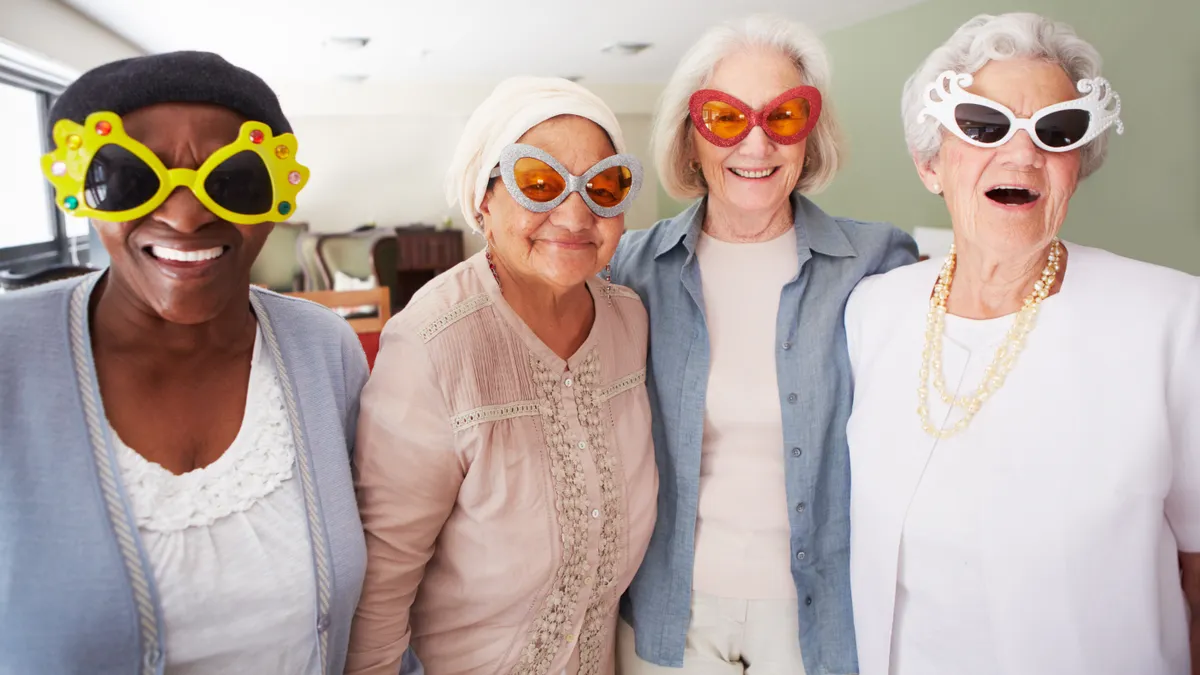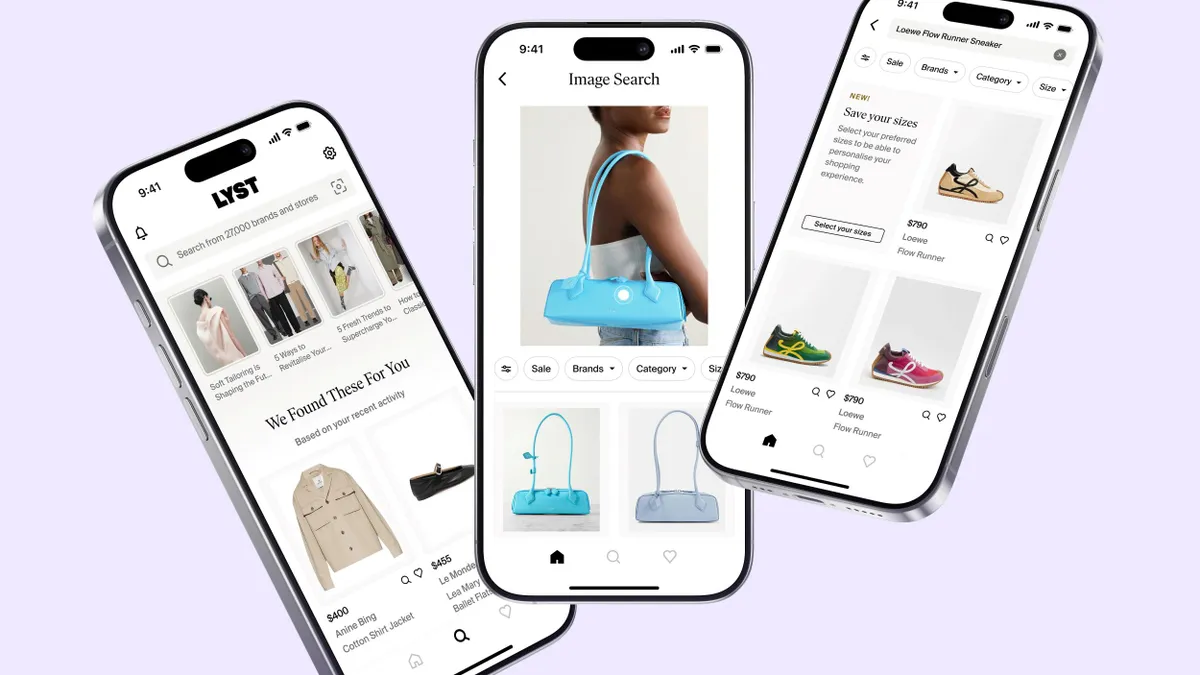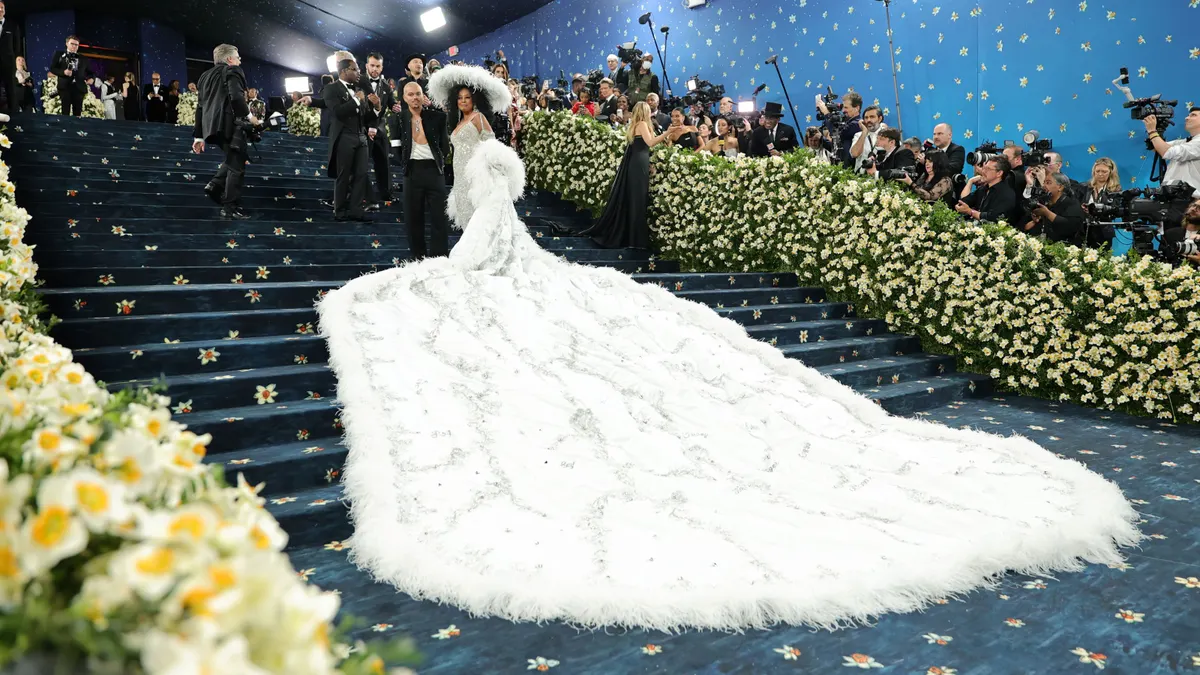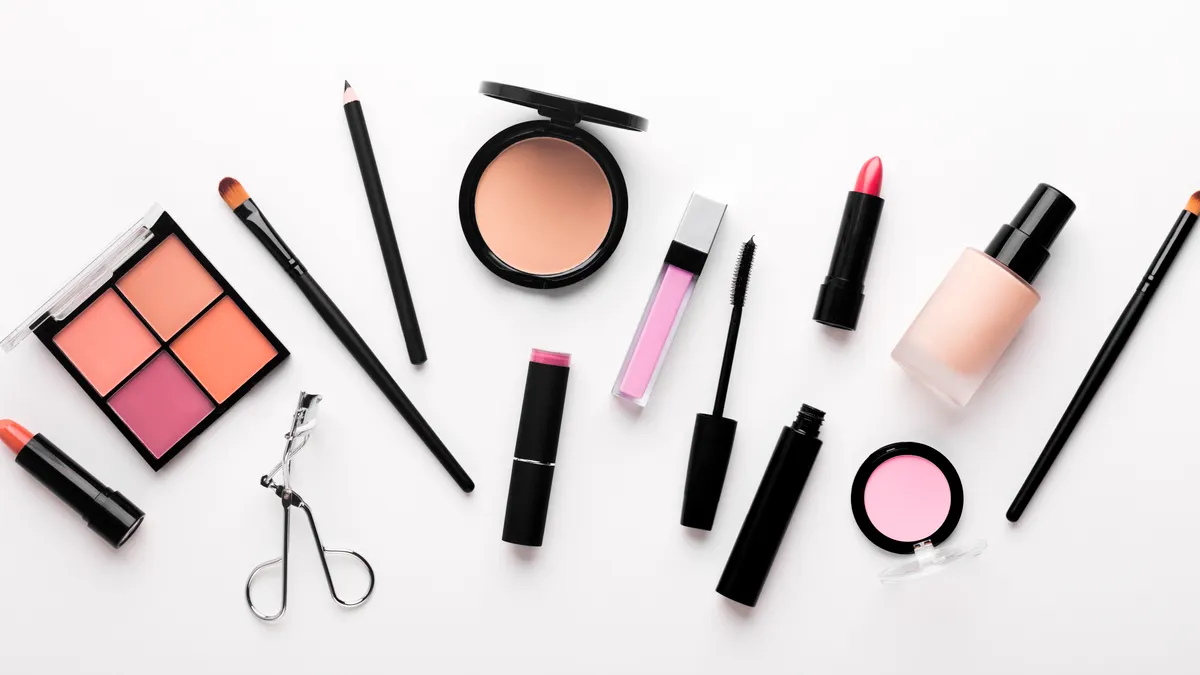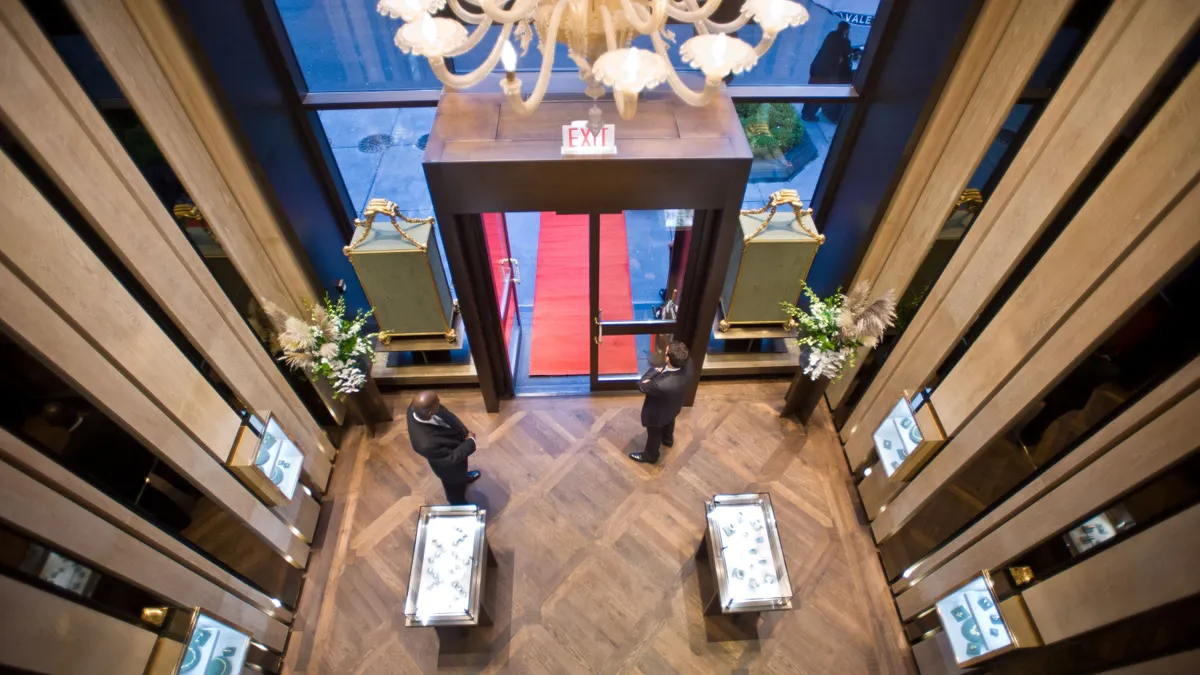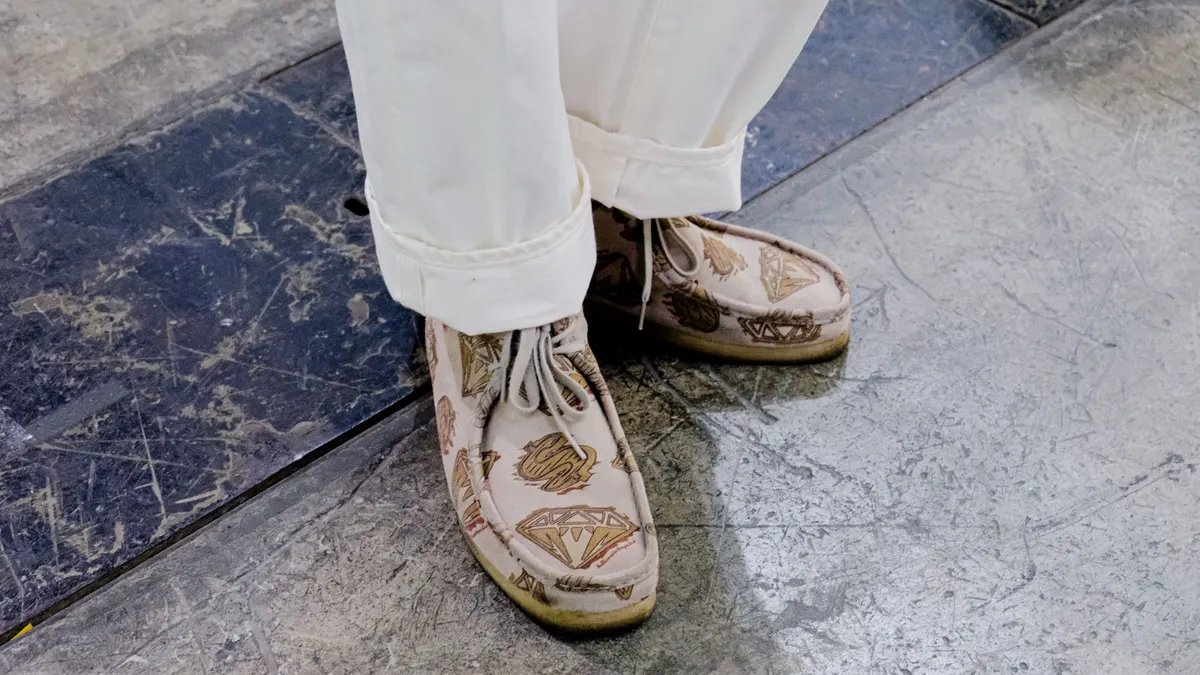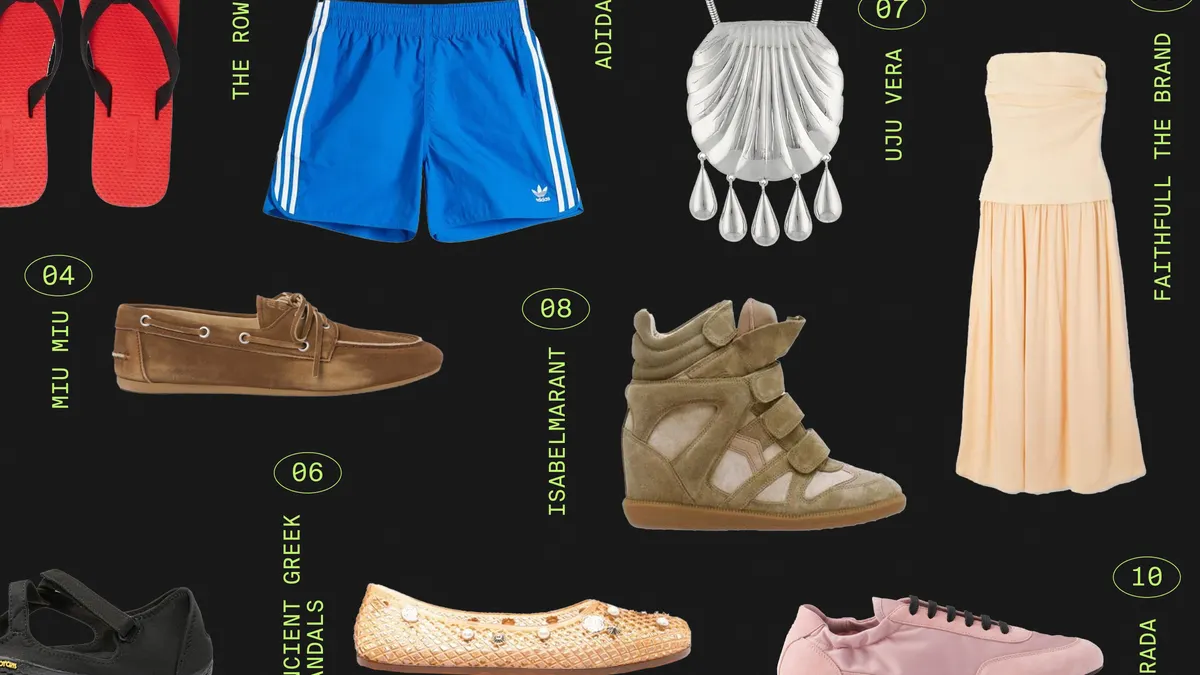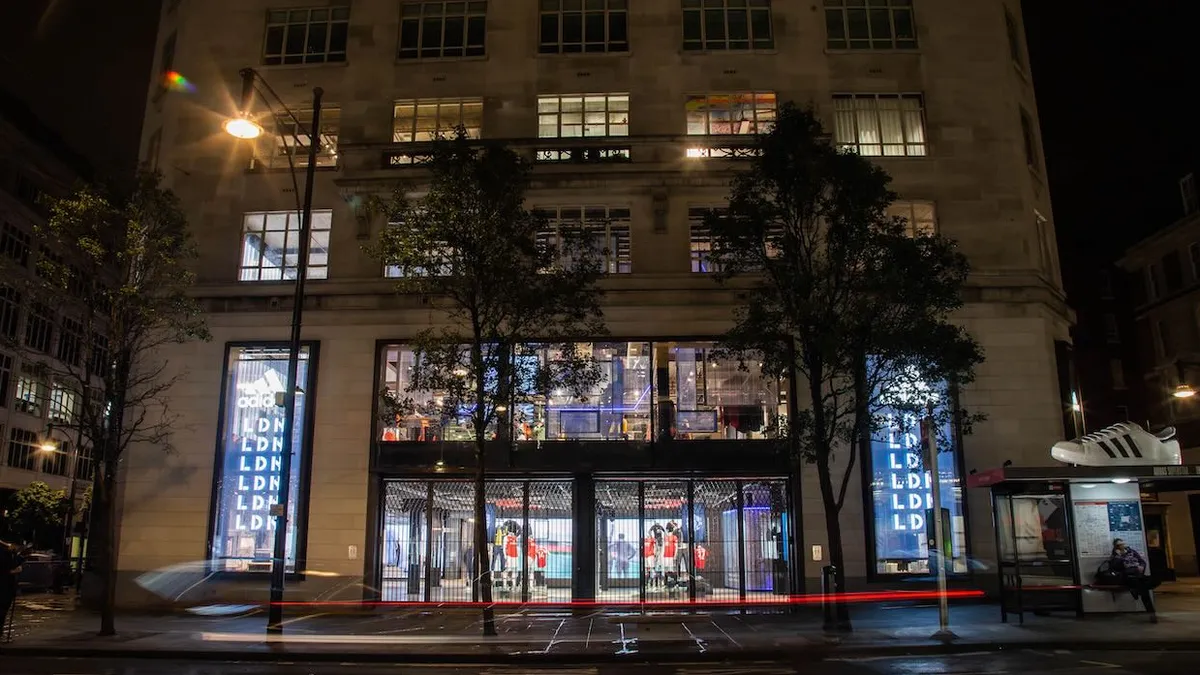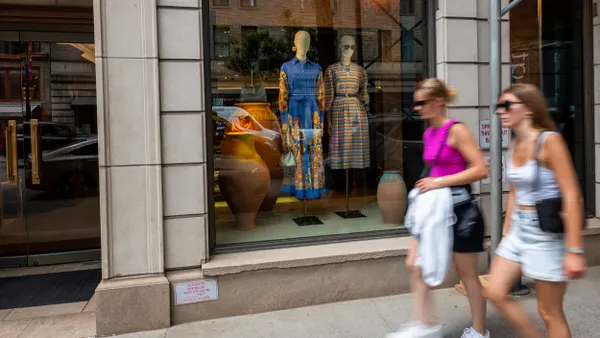While many fashion companies spend time and energy courting their youngest customers, there’s a vast and growing market segment that’s been largely neglected.
They’re affectionately known as the Silver Generation — a reference to their graying hair color, presumably.
In the U.S., their numbers are growing.
Take Baby Boomers, for example. That generation is defined by Pew Research as people currently aged 59 to 77, and in 2019 they numbered 71.6 million. The total population that year was 328.2 million, according to the U.S. Census, which means Baby Boomers accounted for approximately 22%. Taken collectively with their Silent Generation peers, the number of Americans aged 60 and older in 2020 was 74.6 million, according to the Administration for Community Living.
Gen X and Baby Boomers combined represent a significant segment of the U.S. population
Generation X is also aging, with the current 43- to 58-year-old population at about 65.2 million, or about 20%, according to Pew, and even millennials are getting older. Adults aged 27 to 42 numbered about 72.1 million in 2019 per Pew, which is also about 22%, and the oldest millennials will be only three years shy of 50 in 2028. That’s the same year Gen Xers will outnumber Baby Boomers, because Pew predicts that by 2028 there will be 63.9 million Gen Xers compared to 62.9 million Baby Boomers.
Those trends are mirrored in China, Michaela Zhu, marketing executive at digital marketing agency Emerging Comms, with offices in London and Shanghai, said in an email. The country’s National Bureau of Statistics reported in 2019 that the total population was about 1.4 billion, and patterns there can often reflect larger global shifts.
“In the Chinese market, the Silver Generation typically refers to individuals aged 50 and above, specifically those born between the ‘1940s’ and ‘before 1975,’” she said. “In recent years, the aging population in China has been rapidly increasing, with the population aged 60 and above accounting for 18.7% and reaching a staggering 264 million people. This demographic cannot be ignored and represents a significant market in China.”
China's over-60 population represents a sizable market
A recent report by the World Health Organization indicated that by 2040, China’s over-60 population could balloon to 402 million people, meaning that 28% of China’s total population would be part of this aging generation.
For fashion brands, especially those catering to the U.S. market, this demographic has been largely untapped, according to analysts. That could mean lost customers and lost revenue.
Silver spending
In the U.S., older Americans have not only growing numbers but also advanced spending power, and they’re using it.
Baby Boomers and Gen X combined are responsible for the lion’s share of U.S. wealth, based on the most recent findings from the Federal Reserve. As of the end of 2022, Baby Boomers had amassed $73 trillion in combined assets, accounting for approximately 52% of the country’s wealth. Meanwhile, Gen X has stockpiled a whopping $41 trillion, or just over 29%. On the other hand, millennials currently control 6%, or approximately $8.5 trillion of the nation’s money.
Baby Boomers and Gen Xers have amassed significantly more than their counterparts
Gen Xers were found to outspend both millennials and Boomers by 41% and 18% respectively, according to a 2020 study by SmartAsset, which added that both Boomers and Gen Xers liked to buy fashion. They spend 14% and 13.2% of their post-tax incomes each year, respectively, on apparel and personal care products.
Older customers may be particularly well-positioned to buy things they want, rather than focus on necessities, said Sonia Lapinsky, co-leader of the fashion practice and a partner and managing director at multi-industry consulting firm AlixPartners.
“They're spending… and they've been building wealth their whole lives,” she said, adding that they generally don’t have major purchases such as college educations and first mortgages to worry about anymore. “They've been able to save up a nest egg and now it's theirs. And people have been living longer and healthier, if we ignore the last couple of [pandemic] years. So they're… actually spending their money more than any other time, historically.”
Although the CDC reports that average life expectancy recently declined to 76, largely due to COVID-19, the CDC has additionally reported that women are expected to live 79 years compared to 73 years for men. The organization does not track outside of the gender binary.
Hard to ignore
Despite all this, Silver Generation consumers in the United States seem to get passed by, said Michael Prendergast, managing director in Alvarez & Marsal’s Consumer and Retail Group. Gen X, he said, is particularly invisible to the fashion industry. That may be in part because relative to millennials and Baby Boomers, Gen X is currently the smallest generation when it comes to population.
“They're almost this forgotten generation,” he said. “It's a very interesting demographic. When Gen Xers were coming of age in the early ’90s, I think a lot of attention was paid to them. It was part of a whole revolution, [with] that late ’90s edge driving a lot of fashion and culture. Then they were kind of forgotten about, and it's been kind of quiet. Now they’re reaching their peak earnings years, with potentially more disposable income to spend on fashion.”
However, older customers — including late Gen Xers and Baby Boomers — are becoming hard to ignore. Lapinsky said that in China, this Silver Generation is a powerful spending demographic, and its social media influencers have millions of followers.
“They're much more vibrant and healthier than ever, and there are huge fashion companies catering to this demographic,” she said. “There are influencers in their 60s and 70s sporting the latest fashion trends, feeling gorgeous and beautiful and bold. And because an influencer has so much power, if they're strong in China, they can sell anything. There is a whole movement making older people cool and fashionable again.”
As trends grow increasingly borderless, she said, it’s possible that this trend will become global.
“I wonder if we can look to China as something that will eventually get [to the U.S.],” she said. “A lot of the influencers and trends are coming from [China] in other areas.”
The Silver challenge
Yet there’s a challenge in trying to market to the Silver Generation, given its size and its diversity, said Zhu.
“Different cities, income levels, and consumer habits all play a role in determining the needs and preferences of this demographic,” she said. “Therefore, precise targeting and personalized marketing are essential for success.”
To meet the diverse and individualized needs of this demographic, Zhu said, adaptive and personalized products and services are crucial. In addition, she noted that as the personalized needs of the Silver Generation continue to grow, online shopping, customized consumption, experiential consumption, and intelligent consumption are emerging as new growth points in what she called “the Silver Economy.”
Zhu said a key question the fashion industry should be asking is how to better serve and cater to the Silver Generation market, because they represent a significant and growing consumer group.
“Fashion CEOs need to understand the changing needs and preferences of this demographic, and how to effectively communicate with them through marketing and advertising,” she said.
For every challenge, there’s an opportunity, and this customer in particular is ready to be seen, said Erin Schmidt, an independent apparel industry analyst.
“Americans are continuing to work longer and retiring later,” she said. “They're not lying in bed and inactive. They're completely interested in fashion.”
Schmidt noted that 66.5% of Americans aged 55 to 64 are still working, up from 10 years ago, and 26.2% of Americans aged 65 to 74 are still working, per the U.S. Department of Labor.
“That's really significant in terms of fashion and brands,” she said. “There's such a significant opportunity.”
That’s in part because older customers are defying antiquated stereotypes, and still shopping, exercising, traveling and working, Schmidt said.
“Meeting their fashion needs and their shopping needs is still very relevant,” she added.
The fashion industry is lagging behind where it needs to be in terms of catering to these customers, said Lapinsky.
“This is probably a generation that has largely been not given the attention they deserve,” she said. “Now, companies and firms are starting to think about them differently because they realize they have the most spending power and disposable income, and we'd better start trying to figure that out. Because people are still going out and they still want to feel good and look great.”
What Silver wants
Silver consumers aren’t necessarily investing in luxury or big, flashy brand names like their younger counterparts would, said Lapinsky.
“They’re not trying to impress others,” she explained. “This is a stage of life where people recognize that they have wisdom and experience, and they’re doing things more for themselves and their own contentment, and fashion can be that too. [They] want to look good because [they] feel good and [they] like the way [they] look and… want to be fashionable. [They’re] not doing it so somebody sees [them] wearing this big label or this fancy bag.”
They're also buying a wide array of labels, said Prendergast.
“There’s this democratization of fashion, like pairing a Louis Vuitton bag with a Zara t-shirt, getting something from H&M and a pair of premium shoes,” he said. “It's this mixing and matching of luxury and affordability, and these generations really understand that. They’ve influenced fashion the most, and they've been the influencers of most of it as well.”
These consumers are also much more digital than outdated archetypes might suggest, said Zhu.
“It's interesting to note that the Silver Generation in China, like younger generations, also enjoys online shopping, using mobile payments, watching short videos on platforms like Douyin (the Chinese version of TikTok), and chatting on messaging apps like WeChat,” she said. “They are becoming more fashion-forward and modern in their lifestyles, and their online consumption habits are catching the attention of major e-commerce and local service platforms.”
Zhu added that their online habits have given them a breadth of trends from which to choose when styling themselves.
“There is a subgroup of Silver Generation consumers in China who prioritize practicality in their fashion choices, aiming to find clothing that fits well and is comfortable to wear,” she said. “In contrast, another group prefers to stay on-trend and switches between different styles with ease, showing a keen sense of fashion that is on par with younger generations. From being hesitant to try or wear trendy clothing in the past, the Silver Generation is now embracing new fashion trends and is experiencing a new wave of consumerism driven by aesthetic awareness.”
Prendergast said that older generations such as Gen X and Baby Boomers were also statistically more patient than their younger counterparts, according to his firm’s research.
“If a trend was not there, [younger generations] would go to another brand,” he said. “The older generations, Gen X and Baby Boomers, are kind of the opposite end. They were much more brand-oriented and loyal. And they were willing to wait.”
How to connect with Silver customers
The Silver Generation has had a significant impact on the fashion industry, with a trend toward younger, more high-end, and more personalized clothing styles, said Zhu.
“Entertainment activities have played a vital role in awakening the fashion sense of the Silver Generation, and the desire for social recognition and exploring new things has also become a driving force behind this trend,” she said. “However, in the Chinese market, mainstream clothing markets and e-commerce platforms still mainly offer monotonous and stereotypical clothing for middle-aged and elderly consumers. This highlights the demand for high-end, youthful clothing brands that cater to the Silver Generation market.”
Some brands are already seeing that opportunity, said Prendergast.
“Luxury, absolutely, is going after them,” he said. “And then I think active and outdoors [brands] are absolutely going after them.”
He said some of that was reflected in who brands were using in their marketing.
“If you just look at the ads, a lot of them are utilizing people like Julia Roberts, or Jennifer Aniston,” said Prendergast. “You see a lot more of the older generation.”
Another brand that’s been targeting this market and doing it well is Brooks Brothers, said Schmidt.
“[That’s] an iconic retailer that always targeted this consumer,” she said. “Although now they're kind of doing a little bit of a rebrand and targeting a younger consumer.” She said department stores such as Macy’s and Kohl’s, whose consumers have generally skewed a little bit older, have also been targeting a younger demographic recently. “[It’s] interesting that they are actually trying to reach younger consumers, when actually their target consumer is an older consumer,” she added.
Schmidt added that Eileen Fisher was another example of a brand that understands its older consumers, and has done well with that demographic on Instagram and through e-commerce. “They feature middle-aged consumers,” she said. “It’s very well done. Untuckit [also] features consumers of all ages, and they've done a very good job of that.”
Underserved and overlooked
Lapinsky said she didn’t understand the rationale for ignoring the older fashion demographic.
“Why aren't we seeing more messaging and marketing and brand and fashion catering to them?” she asked. “It seems like there's a couple of big brands that are starting to get folks in their campaigns that are that demographic, but [many] are missing the most important spenders right now, with disposable income ready to spend, and [who] still care about fashion.”
She added that she’s surprised the wider fashion industry isn’t discussing it more.
“It does seem under-reported,” she said. “There are articles out there about the Boomers and Gen Xer spending habits, but fashion doesn't seem to be talking about it, not the way we would expect.”
Schmidt agreed and said there’s still room for improvement.
“It’s like any other group that's underserved and overlooked,” she said. “It's an opportunity for retailers and brands. And why is this group underserved? It's such a massive, massive opportunity. You kind of scratch your head and say, I'm not sure. But I think as more consumers grow older, retailers will realize the opportunity.”



